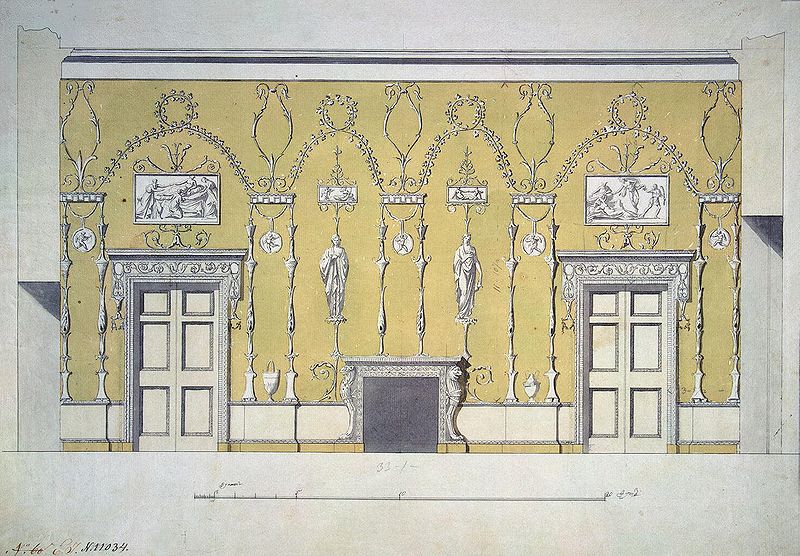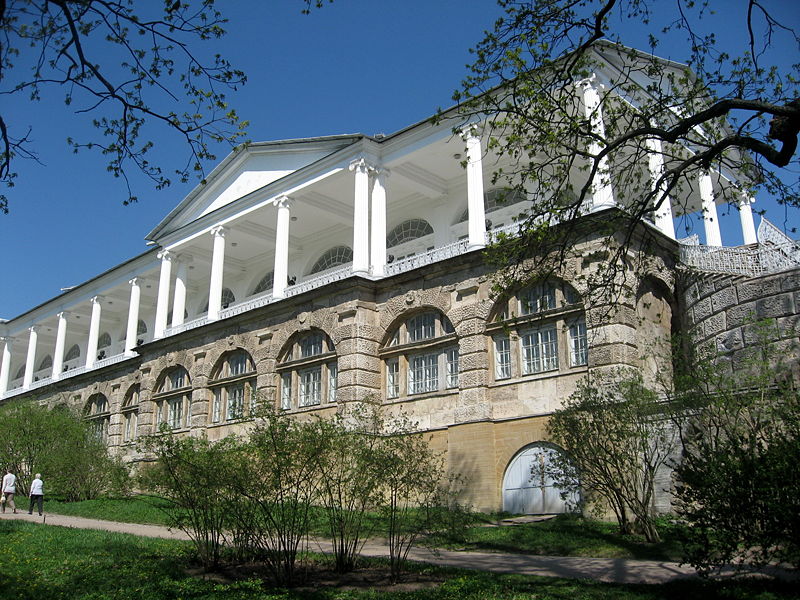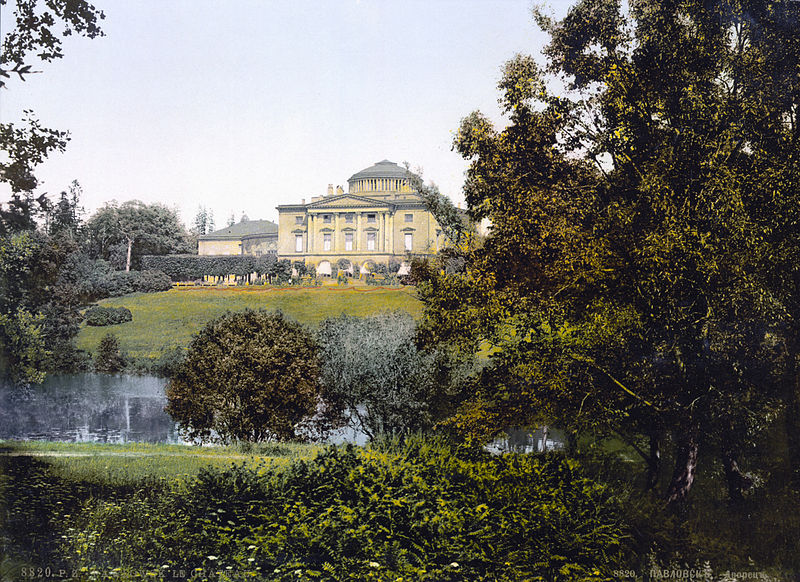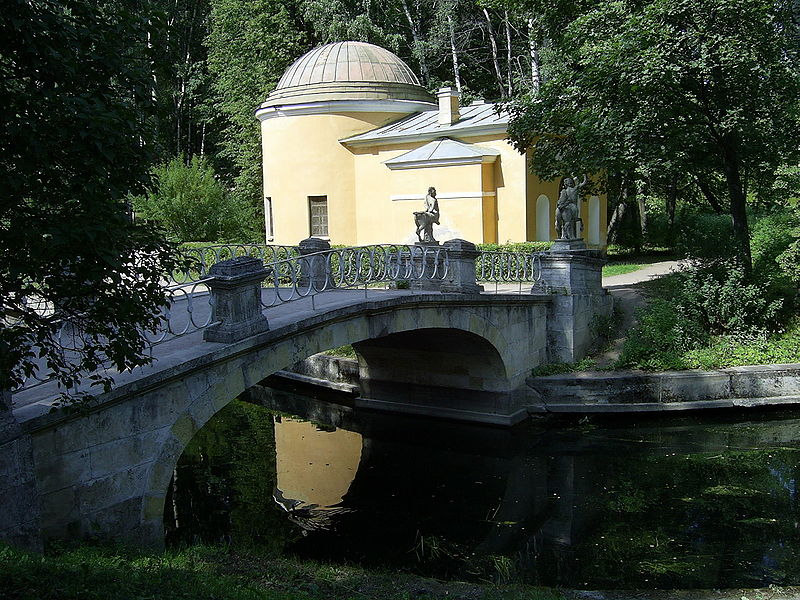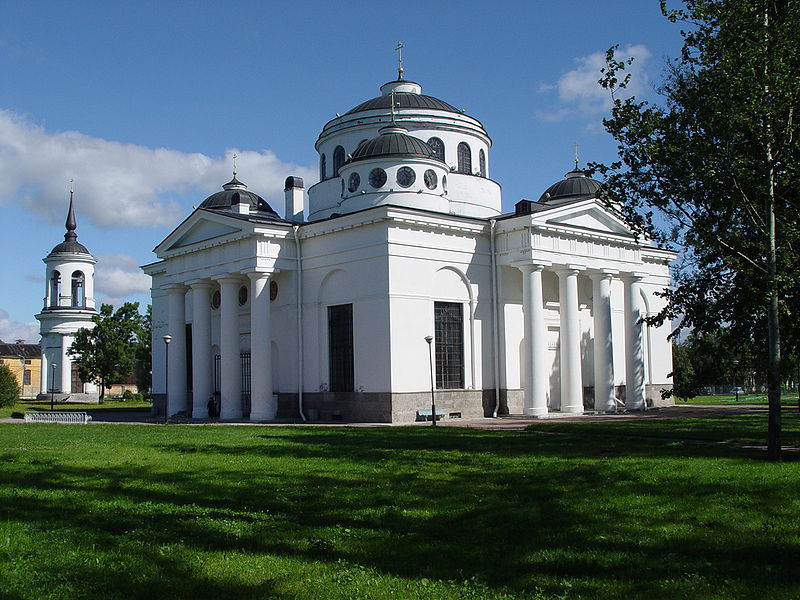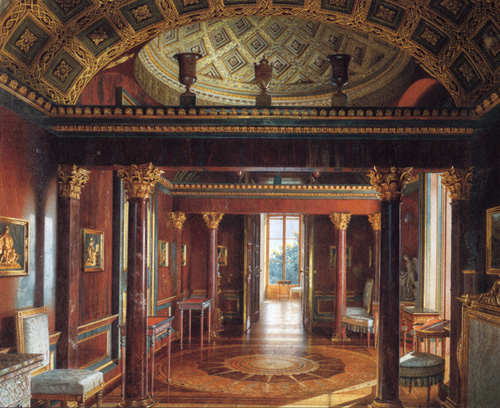<Back to Index>
- Architect Charles Cameron, 1745
PAGE SPONSOR
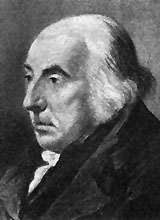
Charles Cameron (1745 – 1812) was a Scottish architect who made an illustrious career at the court of Catherine II of Russia. Cameron, practitioner of early neoclassical architecture, was the chief architect of Tsarskoye Selo and Pavlovsk palaces and the adjacent new town of Sophia from his arrival in Russia in 1779 to Catherine's death in 1796. All his indisputable tangible works "can be encompassed in a day's tour"; Cameron concentrated exclusively on country palaces and landscape gardens. Twice dismissed by Paul of Russia during the Battle of the palaces, Cameron enjoyed a brief revival of his career under Alexander I in 1803 – 1805. Apart from the well researched Catherinian period (1779 – 1796), Cameron's life story remains poorly documented, not in the least due to Cameron's own efforts to shake off the bad reputation he had earned in the 1770s in London.
Cameron's British neoclassicism was an isolated episode in Russian
architecture, then dominated by Italian artists (Antonio Rinaldi,
Giacomo Quarenghi, Vincenzo Brenna). According to his first biographer Georgy Lukomsky,
"Cameron remains one of the greatest exponents of British taste and
British Art abroad, and if he has been so completely forgotten in his
own country, it would seem only right to rectify this omission". Howard
Colvin
ranked Cameron "one of the major urban architects of the eighteenth
century ... an accomplished designer and decorator in a neoclassical
style that has affinities with that of Robert Adam. His style is
sufficiently individual to exonerate him from the imputation of being
merely an imitator... Although still a Palladian, Cameron was a pioneer of Greek Revival in Russia."
Charles Cameron was the son of Walter Cameron, a London carpenter, speculative builder and a member of London Carpenter's Company. He claimed descent from the Camerons of Lochiel, a Scottish clan deeply involved in the Jacobite rising of 1745. Cameron used the Lochiel coat of arms for his personal bookplate, although modern researchers since David Talbot Rice question or deny his claims for Lochiel lineage. Researchers also disagree on the exact year of Cameron's birth, which may be either 1743, 1745 or 1746.
Cameron trained in London with his father and with architect Isaac Ware. After Ware's death in 1766 Cameron settled on continuing his late master's work on a new edition of Lord Burlington's Fabbriche Antiche, a project that required personal studies and surveys of ancient Roman architecture. He spent 1767 in London, preparing prints of works by Andrea Palladio, and arrived in Rome in 1768. There, he surveyed the Baths of Titus and Nero's Domus Aurea, digging into subterranean remains that were rediscovered only in the 20th century. According to Dmitry Shvidkovsky, Cameron met in Rome with another Charles Cameron, a Jacobite and a true member of the Lochiel clan, and "borrowed" the life story of the latter to embellish his own. Cameron returned from Italy around 1769 and published the results of his studies in 1772 (reissues 1774, 1775) under the title The Baths of the Romans explained and illustrated... with proper scientific commentaries in English and French.
Cameron's life between 1769 and his departure to Russia in 1779 remains barely known.
Archives attest to his involvement in only one construction contract in
London, for an Adam style building in Hanover Square (1770 – 1775). Walter Cameron, the main contractor, was ruined by litigation
with the property owner and had to sell his son's art collection to
raise funds. Charles sued his father, who was jailed in Fleet Prison for
debt.
In 1791, when Cameron applied for a membership in the Architect's Club
of London, he was barred admission due to this and other episodes that
had stained his reputation in England.
Catherine's tastes in architecture evolved from Rococo and Gothic Revival architecture in the first decade of her reign to emerging Neoclassicism in the 1780s. She leaned to French variety of neoclassicism (Clerisseau, Ledoux) mixed with ancient Roman motifs. Catherine, perhaps the first of European monarchs, realized that the emerging style had the potential to become a definitive form of imperial art. She spared no expense in hiring foreign architects and craftsmen trained in the neoclassical manner. She instructed Baron Melchior Grimm, her European agent in matters of art and antiques, to hire Italian architects because "the Frenchmen we have here know too much and build dreadful houses - because they know too much." These Italians, Giacomo Quarenghi and relatively unknown Giacomo Trombara, arrived in Russia after Cameron.
Cameron arrived in Russia in 1779, also invited by Catherine's agents. Exact details of Cameron's hire remain vague, but on August 23, 1779 an enthusiastic Catherine wrote to Grimm that "At present I am very taken with Mr. Cameron, a Scot by nationality and a Jacobite, great draughtsman, well versed in antique monuments and well known for his book on the Baths of Rome. At the moment we are making a garden with him on a terrace..." Catherine also wrote that Cameron was raised at the Roman court of the Pretender and that he was a nephew of Jenny Campbell, reflecting a new "romanticized" persona that Cameron assumed in Russia. Cameron settled first in Chernyshev House in Saint Petersburg but soon moved to his own house in Tsarskoye Selo; it was later taken from him by emperor Paul.
Cameron, a Londoner, had no practical experience in landscaping prior to 1779. Peter Hayden suggested that Cameron learned the trade from his father - in - law, John Bush (or Busch) who worked in Tsarskoye Selo since 1771.
Cameron's career in Russia started with expansion of the Chinese Village in Tsarskoye Selo park, borrowing design ideas from William Chambers. The theater of Chinese Village had already been in place, designed by Antonio Rinaldi and Ivan Neelov; Cameron's undisputed additions are the living quarters of the Village and the Chinese Bridges over the canal. During Paul's reign Cameron's buildings were stripped of exterior finishes and later rebuilt by Vasily Stasov in 1817.
In 1780 – 1784 he redecorated the formerly Rococo halls of the main Catherine Palace built by Bartolomeo Rastrelli in the 1750s;
what started as a modest remodeling soon resulted in the most lavish
interiors of the whole palace, reminiscent of Palladio, Raphael, Robert
Adam and Clerisseau yet blending into Cameron's unmistakingly own style.
As early as June 22, 1771 Catherine praised the architect: "There are
not yet but two rooms to do and there one rushes, because just here one
sees nothing to equal it. I confess that I myself will not tire during
nine weeks of watching this."
Catherine had another specific task for Cameron: she envisaged a new, relatively modest Neoclassical building in Tsarskoye Selo near the older Rococo Catherine Palace. Clerisseau, Catherine's first choice, produced drafts for a gigantic and expensive Roman structure based on the Baths of Diocletian, that were rejected out of hand but later influenced Quarenghi and Cameron. In 1782 Cameron started his first standalone building, the Cold Baths, a two story bathhouse in mixed Italian - Greek classicism with luxurious interiors (notably the Agate Pavilion). In 1784 – 1787 it was expanded with a two story gallery (Cameron's Gallery), mixing natural stone Roman ground floor with a lightweight, snow white upper floor gallery marked with unusually wide spacing between columns. The gallery, adorned with statues of foreign poets and philosophers, became Catherine's favorite promenade for years. It was flanked with a formal garden on one side and an English landscape park on the other.
In the beginning of the Gallery project Cameron himself acted
as Catherine's recruiter, hiring fellow Scotsmen to work in Tsarskoye
Selo. 73 craftsmen, including William Heste and Adam Menelaws, agreed to move to Russia (many took their families with them), causing a futile protest of the Foreign Office.
The number was too high for Cameron, and the Scots eventually dispersed
to other projects; Menelaws became assistant to Nikolay Lvov.
Sophia, a model town, was built near Tsarskoye Selo to Cameron's plan. It was designed to be viewed from the walkways of Cameron's Gallery and represent Constantinople, the coveted target of Catherine's Greek project; the name of the town and its cathedral clearly alluded to Hagia Sophia. Catherine decreed that the streets of Sofia must blend with the roads of Tsarskoye Selo park. Cameron arranged the streets to make an impression that they all radiate from the Gallery. The streets were brightly lit at night when Catherine was present at Tsarskoye.
More historical allegories were scattered in the park: the lake with Rinaldi's rostral column represented the Black Sea; Doric ruins symbolized the former might of Ancient Greece. These follies, scattered along the road to Catherine Palace, doubled as the setting for triumphant procession for visiting dignitaries.
Peter Hayden drew parallels between Cameron's landscaping in Sophia
with that of Stowe House park, notably the similarity between Cameron's
Temple of Memory and the Temple of Concord and Victory built at Stowe by
an unknown architect in 1740s. Another direct quote from Stowe is the Pyramid Tomb over the grave of Catherine's three Italian greyhounds; it survived to date but the Temple of Memory was razed by Paul of Russia in 1797.
Pavlovsk, the largest landscape park in 18th century Russia (1,500 acres), is attributed to a succession of architects, starting with Cameron and ending with Carlo Rossi. Cameron built the original palace core that survives to date, the Temple of Friendship, Private Gardens, Aviary, Apollo Colonnade and the Lime Avenue and planned the original landscape, but true authorship of Pavlovsk as a whole should be credited to empress Maria Feodorovna.
The Temple of Friendship was the first building in Pavlovsk, followed by the main palace. Cameron's Pavlovsk was far from Paul's vision of what an imperial residence should be: it lacked moats, forts and all other military paraphernalia so dear to Paul; "Cameron created a markedly private world for the Grand Duke. The palace could have belonged to anyone... not to the tsar of Russia in waiting."
Conflicts between Cameron and Paul and Maria date back to the
couple's Grand Tour of Europe (1781 – 1782). Maria complained about
Cameron's delays since 1782.
Constrained financially, Paul and Maria closely watched Cameron's
progress and regularly curbed his far reaching, expensive plans. Cameron
also displayed signs of aversion to their management since 1782, but
court intermediaries downplayed the conflict for a while. By 1785 it
became public: Cameron quarreled with Paul over costs of Pavlovsk and Paul himself detested Cameron as Catherine's agent. Between 1786 and 1789
Cameron's duties in Pavlovsk passed to an Italian, Vincenzo Brenna,
hired by Paul in 1782. Dismissed by Paul, Cameron continued working on
Catherine's own projects until her death in 1796.
Upon ascension to power in 1796, Paul fired Cameron from all his contracts and deprived him of his house in Tsarskoye. Cameron experienced financial difficulties and had to sell his collection of books to Pavel Argunov. His activities during Paul's reign are largely unknown. Georgy Lukomsky wrote than in 1799 Cameron redesigned the Baturyn Palace of count Kirill Razumovsky; according to contemporary researchers, Baturyn was a collaborative effort led by Nikolay Lvov and Cameron's involvement cannot be reliably measured.
Lukomsky also wrote that in 1800 – 1801 Cameron temporarily left Russia for England; according to Colvin, this opinion is unsubstantiated: in 1800 – 1801 Cameron worked in Pavlovsk, then owned by Maria Fyodorovna, where he built the Ionic Pavilion of Three Graces.
Alexander, who succeeded Paul in March 1801, appointed Cameron the chief architect of the Russian Admiralty.
During this brief (1802 – 1805) employment Cameron designed the Naval
Hospital in Oranienbaum and two unrealized drafts for the Naval
Cathedral in Kronstadt. He also worked in Pavlovsk, restoring the palace
after a fire. In 1805 Cameron finally retired; his tenure at the Admiralty passed to Andreyan Zakharov.
Lukomsky noted that Cameron, who once executed Catherine's soaring
dreams, was hardly interested in building barracks and repairing
gateways.
Cameron's personality remains a "shadowy figure": being "proud, aloof and difficult", he had a talent for alienating people. He did not participate in the social life of the English diaspora in Saint Petersburg; he had few Russian friends, did not speak Russian and was disliked for his attitude of "English superiority".
In 1784 Cameron married Catherine Bush, daughter of imperial gardener John Bush. They had a daughter, Mary, however, her birth has not been evidenced by church records. Mary Cameron, engaged to James Grange, left Russia in 1798. Grange returned to Russia in 1803, and, according to Anthony Cross, could have helped Cameron's career revival in 1803 – 1805. By 1839 the Granges had seven surviving children.
Ironically, during retirement Cameron and his wife lived in Paul's favorite palace, Saint Michael's Castle.
The redundant and still incomplete castle was converted to living
quarters and housed up to 900 residents, including the Camerons and
future field marshal Diebitsh. Cameron died in 1812, before Napoleon's invasion of Russia; his widow secured a pension from the Russian Government, sold out Cameron's library and either returned to England or died in Saint Petersburg.
